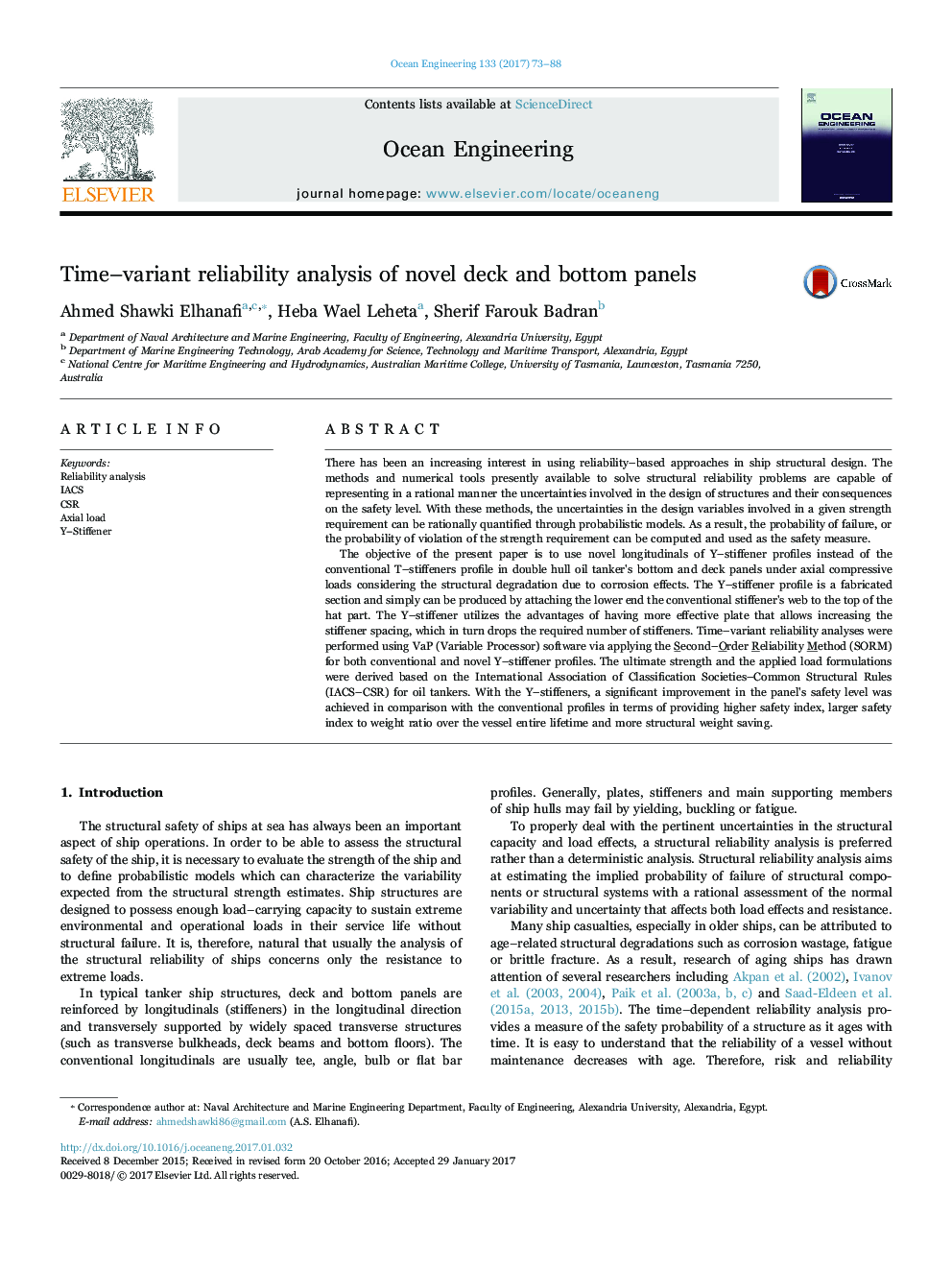| Article ID | Journal | Published Year | Pages | File Type |
|---|---|---|---|---|
| 5474324 | Ocean Engineering | 2017 | 16 Pages |
Abstract
The objective of the present paper is to use novel longitudinals of Y-stiffener profiles instead of the conventional T-stiffeners profile in double hull oil tanker's bottom and deck panels under axial compressive loads considering the structural degradation due to corrosion effects. The Y-stiffener profile is a fabricated section and simply can be produced by attaching the lower end the conventional stiffener's web to the top of the hat part. The Y-stiffener utilizes the advantages of having more effective plate that allows increasing the stiffener spacing, which in turn drops the required number of stiffeners. Time-variant reliability analyses were performed using VaP (Variable Processor) software via applying the Second-Order Reliability Method (SORM) for both conventional and novel Y-stiffener profiles. The ultimate strength and the applied load formulations were derived based on the International Association of Classification Societies-Common Structural Rules (IACS-CSR) for oil tankers. With the Y-stiffeners, a significant improvement in the panel's safety level was achieved in comparison with the conventional profiles in terms of providing higher safety index, larger safety index to weight ratio over the vessel entire lifetime and more structural weight saving.
Related Topics
Physical Sciences and Engineering
Engineering
Ocean Engineering
Authors
Ahmed Shawki Elhanafi, Heba Wael Leheta, Sherif Farouk Badran,
